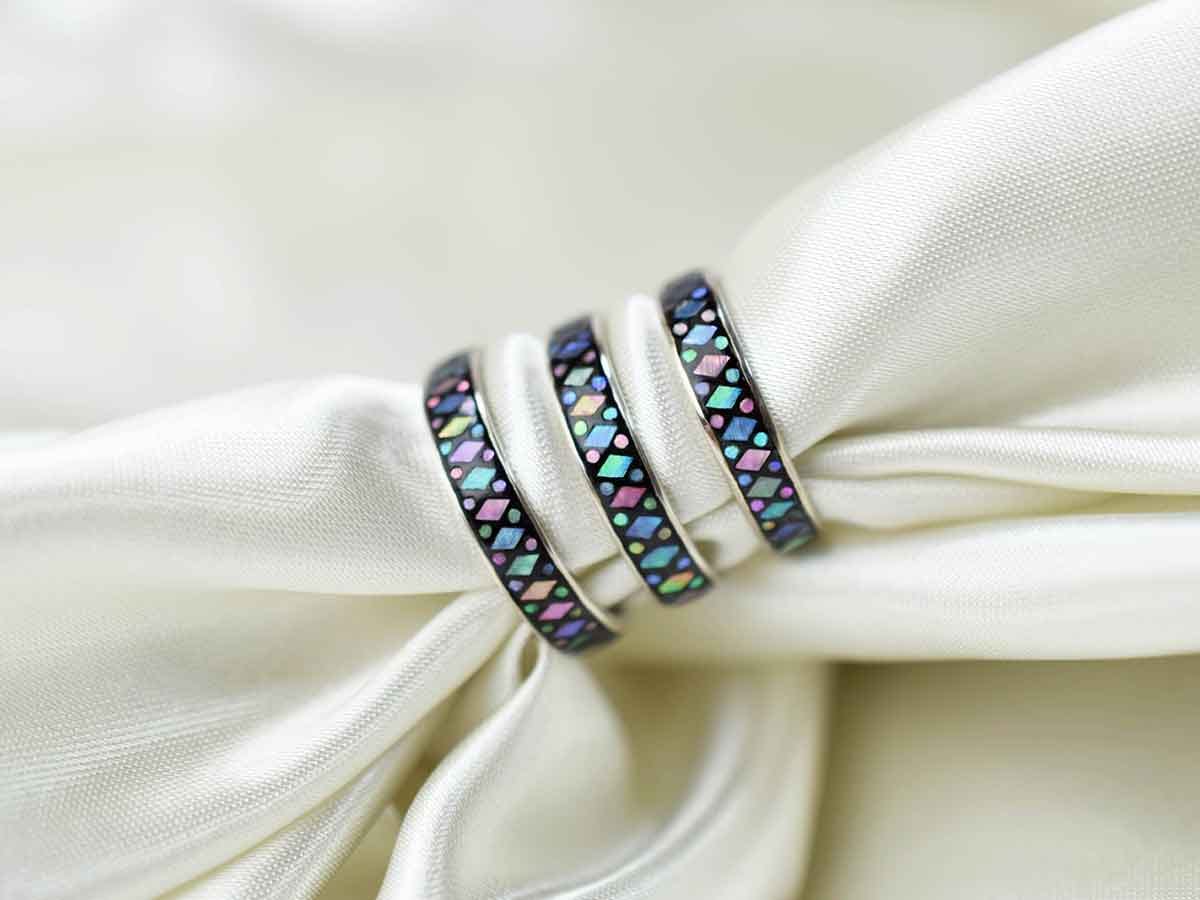
Source: 野村拓也 螺鈿職人 Raden artisan Takuya Nomura (@takuyanomurardn) - image reproduced with permission
Beautiful mother-of-pearl inlay artist’s viral Tweet brings brisk business
- Tags:
- Artisan / mother-of-pearl inlay / raden / Sagaraden Nomura / Twitter
Related Article
-

Twitter User Trolled By Japanese Vending Machine
-

Toddler and fluffy house cats battle over the restroom the only way they can
-

This British Shorthair Kitten Is An Adorable Ball Of Fluff And She Knows It
-

Cat’s Irresistible Apology After Spilling Cola On The Rug Grants Her Instant Forgiveness
-

Japanese Artist Turns Love For Her Parakeets Into Beautiful Bird-Inspired Food Art
-

Genius chinchilla in Japan will melt your heart


Honed through generations of mastery, the techniques used in traditional Japanese crafts are nothing short of complex. They often require delicate handiwork and utmost precision from the artisans practicing them.
The lacquerware decoration technique raden (螺鈿), or mother-of-pearl inlay, is no exception to this rule. Its name tells us a little bit about its story (ra means “shell” and den means “decorate” or “inlaid”), however, it doesn’t fully capture the complexity of what goes on behind it.
Raden artisans make use of shells such as abalone, turban shells, and pearl oysters and they take the shells’ iridescent portions (commonly known as the “mother of pearl”) to create thin shapes that are often as thin as 0.1 millimeters. These shapes are then inlaid onto the surface of different types of lacquerware and as a result of the intricacy of their work, they are rewarded with beautiful, shining pieces of art.
One family-run shop that uses the raden technique to decorate jewelry pieces and lacquerware is Sagaraden Nomura 嵯峨螺鈿野村 in Kyoto. The shop was founded in 1910 and is currently being run by the third-generation representative, Mamoru Nomura 野村守.
野村拓也 螺鈿職人 Raden artisan Takuya Nomura (@takuyanomurardn)
野村拓也 螺鈿職人 Raden artisan Takuya Nomura (@takuyanomurardn)
In 2020, Mamoru’s son and raden craftsman, Takuya Nomura 野村拓也 started a Twitter account to share information about their shop and their creations. Sagaraden Nomura was among one of many shops that took a financial hit from the lack of customers due to the coronavirus pandemic. After seeing what other businesses did to adapt to a dire situation, Takuya saw social media as a way to help promote online sales for their ailing business.
His tweets focus not just on introducing his family’s products, but also on explaining some of the work that goes into each item. These tweets were well-received by Japanese-speaking Twitter users, with many people being impressed at having learned about their products and about the existence of the raden technique for the very first time.
野村拓也 螺鈿職人 Raden artisan Takuya Nomura (@takuyanomurardn)
野村拓也 螺鈿職人 Raden artisan Takuya Nomura (@takuyanomurardn)
Nomura stated that at the start, he hadn’t told his family about his tweets, and so the sudden influx of online orders came as a surprise to all of them. But now, they’re all working together to cater to the hundreds of new customers that they have.
When asked about his plans and hopes for raden and the crafts world in general, Nomura says that he thinks it’s important to hand down the art to the next generation. He’s ensuring this by working on some hands-on projects for students both in Japan and from abroad where they try their hand at the raden process. They’re also working on collaborating with designers from other countries to bring awareness for the art of raden to an international scale.
Lastly, he says that through his work, he wants to prove that “‘being a craftsman is a job that allows you to eat well’ and give hope to those who want to become craftsmen [in the future].”
You can learn more about Sagaraden Nomura through their English website here.